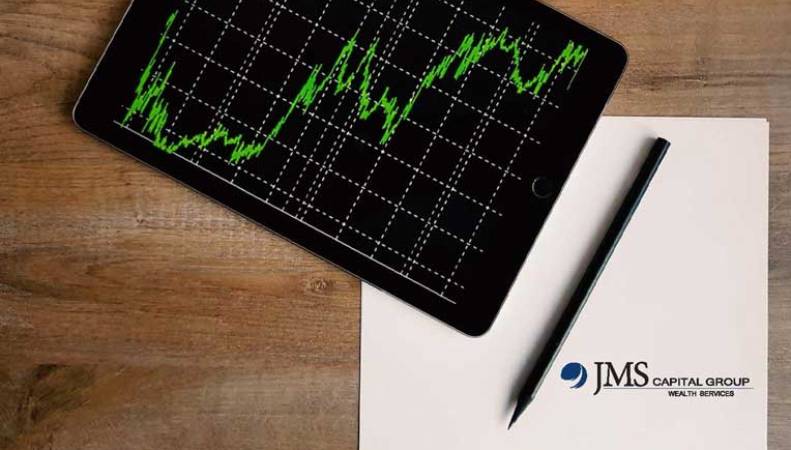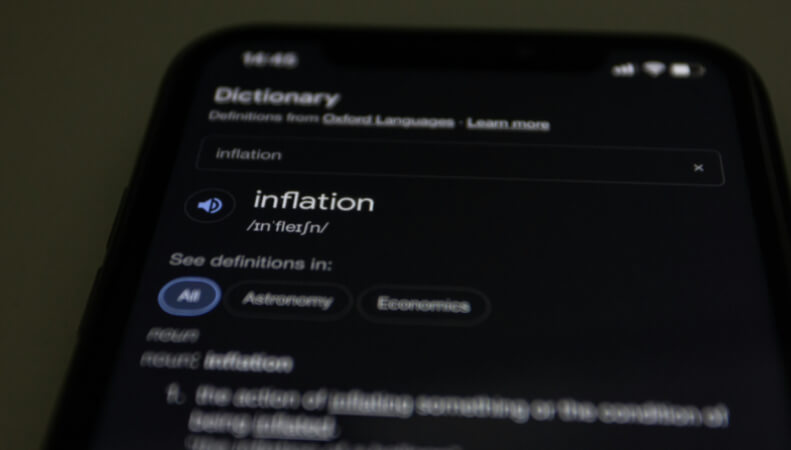By using our website, you agree to the use of cookies as described in our Cookie Policy
Blog
Weekly Market Commentary
The Markets
What begins with the letter “I”?
Infrastructure is essential and sometimes taken for granted. Pipes carry drinking water to our homes, offices, and healthcare facilities, and carry away sewage and wastewater. Highways, airports, railroads, waterways, roads, and bridges make efficient transportation of goods and safe travel possible. Energy systems and transmission lines keep the lights on and the stove cooking. Broadband data transmissions systems assure high speed internet access.
On Thursday, President Biden and a bipartisan group of senators announced that progress had been made on the framework for a bipartisan infrastructure plan. Investors were happy to hear it. Randall Forsyth of Barron’s reported:
“…Washington this past week finally took steps to address the nation’s manifest deficiencies in its infrastructure…Perhaps tellingly, the bond market had only a minimal reaction to the prospect of further government spending. But stocks of companies that could see a bonanza of dollars flowing from D.C. had double-digit gains on the week, and the indexes notched gains averaging around 3%, with the S&P 500 ending at a record.”
Financial markets paid less attention to the other “I” – inflation.
On Friday, The Bureau of Economic Analysis reported on the Federal Reserve’s favorite inflation measure, core personal consumption expenditures (PCE). Prices, excluding food and energy, were up 3.4 percent from May 2020 to May 2021. From April 2021 to May 2021, PCE increased 0.5 percent which was lower than the previous month-to-month increase.
Yields on 10-year U.S. Treasuries moved slightly higher last week, and U.S. stocks had their best week since February, reported Naomi Rovnick and Francesca Friday of the Financial Times.
(The one-year numbers in the scorecard below remain noteworthy. They reflect the strong recovery of U.S. stocks from last year’s coronavirus downturn to the present day.)
Data as of 6/25/21 |
1-Week |
Y-T-D |
1-Year |
3-Year |
5-Year |
10-Year |
|
Standard & Poor's 500 (Domestic Stocks) |
2.7% |
14.0% |
38.8% |
16.4% |
16.4% |
12.8% |
|
Dow Jones Global ex-U.S. |
1.5 |
9.3 |
35.1 |
7.6 |
10.1 |
3.8 |
|
10-year Treasury Note (Yield Only) |
1.5 |
NA |
0.7 |
2.9 |
1.5 |
2.9 |
|
Gold (per ounce) |
0.8 |
-5.4 |
1.7 |
12.1 |
6.2 |
1.8 |
|
Bloomberg Commodity Index |
1.7 |
18.4 |
45.7 |
2.4 |
1.3 |
-5.0 |
S&P 500, Dow Jones Global ex-US, Gold, Bloomberg Commodity Index returns exclude reinvested dividends (gold does not pay a dividend) and the three-, five-, and 10-year returns are annualized; and the 10-year Treasury Note is simply the yield at the close of the day on each of the historical time periods.
Sources: Yahoo! Finance; MarketWatch; djindexes.com; Federal Reserve Bank of St. Louis; London Bullion Market Association.
Past performance is no guarantee of future results. Indices are unmanaged and cannot be invested into directly. N/A means not applicable.
It’s hard to get excited about a ‘c-’. Since 1998, the American Society of Civil Engineers (ASCE) has been grading infrastructure in the United States. ‘A’ is exceptional, fit for the future. ‘B’ is good, adequate for now. ‘C’ is mediocre, requires attention. ‘D’ is poor, at risk. ‘F’ is failing, unfit for purpose.
The 2021 Report Card for America’s Infrastructure graded 17 categories of infrastructure. The grades were poor enough that, if the report card had been handed to a student to take home, it might never have been delivered to the parents.
| Rails | B |
| Ports | B- |
| Solid Waste | C+ |
| Bridges | C |
| Drinking Water | C- |
| Energy | C- |
| Aviation | D+ |
| Public Parks | D+ |
| Schools | D+ |
| Inland Waterways | D+ |
| Wastewater | D+ |
| Hazardous Waste | D+ |
| Dams | D |
| Roads | D |
| Stormwater | D |
| Levees | D |
| Transit | D- |
The report’s authors stated, “If the United States is serious about achieving an infrastructure system fit for the future, some specific steps must be taken, beginning with increased, long-term, consistent investment. To close the nearly $2.59 trillion 10-year investment gap, meet future need, and restore our global competitive advantage, we must increase investment from all levels of government and the private sector from 2.5% to 3.5% of U.S. Gross Domestic Product (GDP) by 2025. This investment must be consistently and wisely allocated...”
As many teachers have told many students over the years, a poor grade means there is room for improvement.
Weekly Focus – Think About It
“There is no greater burden than great potential.”
–Charles M. Schultz, Cartoonist
Best regards,
JMS
Sources:
https://infrastructurereportcard.org/wp-content/uploads/2020/12/2021-IRC-Executive-Summary.pdf
https://www.barrons.com/articles/infrastructure-inflation-jobs-51624670171 (or see https://resources.carsongroup.com/hubfs/WMC-Source/2021/06-28-21_Barrons_Infrastructure%20Gets%20Its%20Week_Footnote%203.pdf)
https://www.bea.gov/news/2021/personal-income-and-outlays-may-2021
https://www.ft.com/content/2b07f1d2-42a5-4fd6-9fe1-441487213a36 (or see https://resources.carsongroup.com/hubfs/WMC-Source/2021/06-28-21_Financial%20Times_Wall%20Street%20Best%20Week%20Since_Footnote%205.pdf)
https://infrastructurereportcard.org/wp-content/uploads/2020/12/2021-IRC-Executive-Summary.pdf (Pages 1-5, 9)
https://www.goodreads.com/author/quotes/209672.Charles_M_Schulz?page=2
The material in this work is proprietary to and copyrighted by Carson Coaching and is used by JMS Capital Group Wealth Services LLC with permission.| Government bonds and Treasury Bills are guaranteed by the U.S. government as to the timely payment of principal and interest and, if held to maturity, offer a fixed rate of return and fixed principal value. However, the value of fund shares is not guaranteed and will fluctuate. | Corporate bonds are considered higher risk than government bonds but normally offer a higher yield and are subject to market, interest rate and credit risk as well as additional risks based on the quality of issuer coupon rate, price, yield, maturity, and redemption features.| The Standard & Poor's 500 (S&P 500) is an unmanaged group of securities considered to be representative of the stock market in general. You cannot invest directly in this index.| All indexes referenced are unmanaged. Unmanaged index returns do not reflect fees, expenses, or sales charges. Index performance is not indicative of the performance of any investment.| The Dow Jones Global ex-U.S. Index covers approximately 95% of the market capitalization of the 45 developed and emerging countries included in the Index. | The 10-year Treasury Note represents debt owed by the United States Treasury to the public. Since the U.S. Government is seen as a risk-free borrower, investors use the 10-year Treasury Note as a benchmark for the long-term bond market.| Gold represents the afternoon gold price as reported by the London Bullion Market Association. The gold price is set twice daily by the London Gold Fixing Company at 10:30 and 15:00 and is expressed in U.S. dollars per fine troy ounce.| The Bloomberg Commodity Index is designed to be a highly liquid and diversified benchmark for the commodity futures market. The Index is composed of futures contracts on 19 physical commodities and was launched on July 14, 1998. | The Dow Jones Industrial Average (DJIA), commonly known as “The Dow,” is an index representing 30 stock of companies maintained and reviewed by the editors of The Wall Street Journal.| The NASDAQ Composite is an unmanaged index of securities traded on the NASDAQ system.| International investing involves special risks such as currency fluctuation and political instability and may not be suitable for all investors. These risks are often heightened for investments in emerging markets.| Yahoo! Finance is the source for any reference to the performance of an index between two specific periods.| Opinions expressed are subject to change without notice and are not intended as investment advice or to predict future performance.| Economic forecasts set forth may not develop as predicted and there can be no guarantee that strategies promoted will be successful.| Past performance does not guarantee future results. Investing involves risk, including loss of principal.| You cannot invest directly in an index.| Stock investing involves risk including loss of principal.| The foregoing information has been obtained from sources considered to be reliable, but we do not guarantee it is accurate or complete.| There is no guarantee a diversified portfolio will enhance overall returns or outperform a non-diversified portfolio. Diversification does not protect against market risk.| Asset allocation does not ensure a profit or protect against a loss.| Consult your financial professional before making any investment decision.
JMS Capital Group Wealth Services LLC
417 Thorn Street, Suite 300 | Sewickley, PA | 15143 | 412‐415‐1177 | jmscapitalgroup.com
‹ Back












Comments